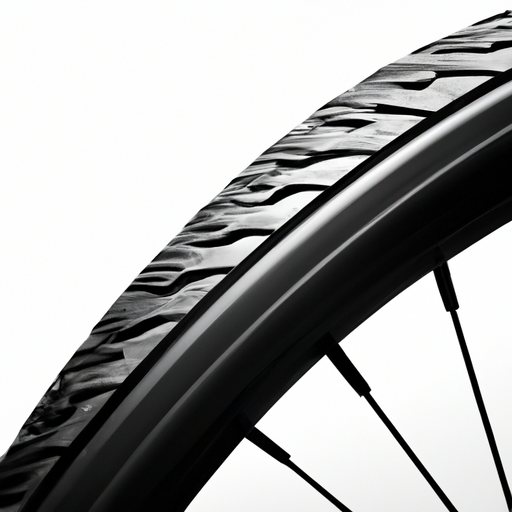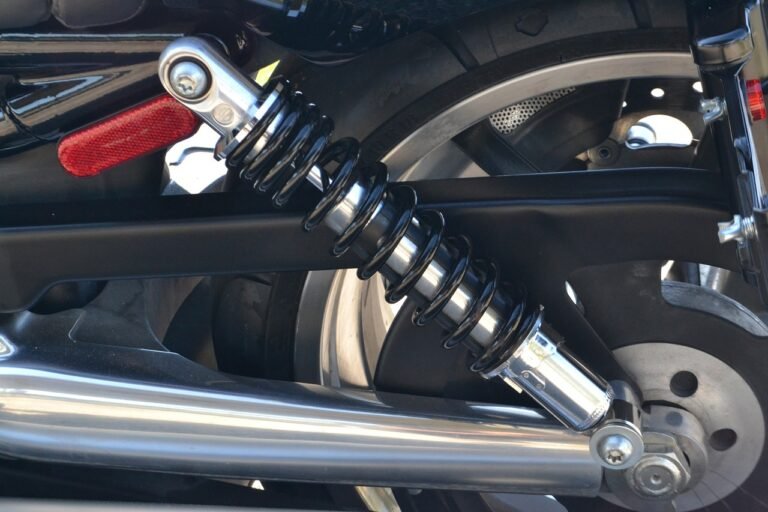Can I Use Tubeless Tires On My Road Bike?
If you’ve ever wondered whether tubeless tires can be used on your road bike, you’re in the right place. Many cyclists have begun adopting tubeless tires for their mountain bikes, but what about road bikes? In this article, we’ll explore the world of tubeless tires and uncover whether they are a suitable option for your road adventures. So, if you’re curious to find out if tubeless is the way to go for your road bike, let’s dive in and discover all the ins and outs of this exciting tire technology.
The Basics of Tubeless Tires
Understanding Tubeless Tires
Tubeless tires are a type of bicycle tire that do not require an inner tube to hold the air pressure. Instead, they form an airtight seal with the rim of the wheel, allowing the tire to be inflated and hold air pressure on its own. This design eliminates the need for a traditional inner tube, which can be susceptible to punctures and pinch flats. Tubeless tires have become increasingly popular in off-road cycling disciplines such as mountain biking, but they are also gaining traction in the road cycling community.
Advantages of Tubeless Tires
There are several advantages to using tubeless tires on your road bike. First and foremost, tubeless tires provide increased puncture resistance compared to traditional tubed tires. The absence of an inner tube eliminates the risk of pinch flats caused by the tube getting pinched between the tire and the rim. Additionally, tubeless tires can be run at lower air pressures, providing a smoother and more comfortable ride on rough roads. This also allows for better traction and cornering grip, especially in wet conditions.
Tubeless vs. Tubular Tires
While tubeless tires have gained popularity in recent years, tubular tires have long been the go-to choice for professional road racers. Tubular tires, also known as sew-up tires, have an inner tube that is sewn inside the tire casing. They are glued to the rim and require a specific type of wheel, known as a tubular rim. Tubular tires are known for their lightweight, supple ride quality and are often preferred by racers for their exceptional performance. However, they require more maintenance and can be more challenging to repair in the event of a puncture compared to tubeless tires.
Tubeless Tires for Road Bikes
Compatibility with Road Bikes
Many road bike manufacturers now offer tubeless-ready models, which are specifically designed to accommodate tubeless tires. These bikes come equipped with tubeless-compatible rims and often include tubeless valves and rim tape. However, even if your road bike is not tubeless-ready, it is still possible to convert it to tubeless by purchasing tubeless-compatible rims or using conversion kits.
Benefits of Tubeless Tires for Road Bikes
Using tubeless tires on your road bike can provide numerous benefits. One of the main advantages is the increased puncture resistance, as mentioned previously. This is particularly beneficial on long rides where being stranded with a flat tire can be frustrating and time-consuming. Additionally, tubeless tires offer lower rolling resistance, which can result in faster speeds and improved efficiency. They also provide a more comfortable ride by absorbing vibrations and road chatter, allowing you to stay in the saddle for longer periods without discomfort.
Factors to Consider
Before making the switch to tubeless tires on your road bike, there are a few factors to consider. First, you will need to ensure that your current rims are tubeless-compatible or invest in new tubeless-ready rims. Additionally, you will need to purchase tubeless tires that are compatible with your rim width. It is also important to consider the added weight of the sealant used in tubeless setups, as this may impact your overall bike weight. Finally, it is worth noting that tubeless tires can be more challenging to mount and remove compared to traditional clincher tires.
Converting to Tubeless Tires
Changing Your Existing Tires
Converting your existing tires to tubeless requires a few steps. First, you will need to remove the old tires and clean the rims thoroughly to ensure a proper seal. Next, you will need to apply tubeless rim tape to cover the spoke holes in the rim. This tape creates an airtight seal and prevents air from escaping through the spoke holes. Once the tape is in place, you can install the tubeless valve, which allows air to enter and exit the tire. After these steps are complete, you can mount the tubeless tires onto the rims and inflate them to the recommended pressure.
Tools and Equipment Needed
To convert your tires to tubeless, you will need a few specific tools and equipment. First and foremost, you will need a tubeless conversion kit, which typically includes tubeless rim tape, tubeless valves, and sealant. You will also need tire levers to remove the old tires, a pump or air compressor for inflating the tubeless tires, and a valve core remover to install the tubeless valves. Additionally, having isopropyl alcohol or another suitable solvent on hand for cleaning and preparing the rims is recommended.
Step-by-Step Conversion Process
Converting to tubeless tires can be a straightforward process if you follow the right steps. Here is a step-by-step guide to help you through the conversion:
- Remove the existing tires from your rims using tire levers.
- Clean the rims thoroughly with isopropyl alcohol or another suitable solvent to remove any debris or residue.
- Apply tubeless rim tape to cover the spoke holes in the rim. Be sure to stretch the tape tightly and overlap it for full coverage.
- Insert the tubeless valve through the valve hole in the rim, ensuring that the rubber grommet is seated securely on the inside of the rim.
- Mount the tubeless tires onto the rims, starting at the valve hole and working your way around the rim.
- Inflate the tubeless tires to the recommended pressure using a pump or air compressor. Ensure that both tires are seated correctly on the rims and that the bead is fully sealed against the rim.
- Check for any leaks by applying soapy water to the tire sidewalls and valve area. If bubbles form, identify the source of the leak and make the necessary adjustments.
- Once the tires are fully inflated and sealed, add sealant through the valve using a sealant injector or similar tool. Follow the manufacturer’s instructions for the recommended amount of sealant.
- Rotate the wheels to distribute the sealant evenly inside the tires.
- Recheck the tire pressure and adjust as needed.
- Test ride your bike to ensure that the tubeless conversion is successful and to get a feel for the improved ride quality and performance.
Tubeless Tires Maintenance
Setting Tire Pressure
Setting the correct tire pressure is important for optimal performance and safety when using tubeless tires. While the exact pressure will vary depending on factors such as rider weight and riding conditions, it is generally recommended to start with a lower pressure compared to traditional tubed tires. This is because tubeless tires can be run at lower pressures without risking pinch flats. Experiment with different pressures to find the sweet spot that balances comfort, traction, and rolling resistance.
Sealant Check and Replacement
Tubeless tires require the use of sealant, which helps to seal any small punctures or cuts in the tire. Over time, the sealant can dry out or become less effective, so it is important to check and replace it periodically. To check the sealant, simply remove the valve core and inspect the inside of the tire. If the sealant has dried up or has formed large clumps, it is time to replace it. Follow the manufacturer’s instructions for removing the old sealant and adding fresh sealant to your tires.
Puncture Repair
One of the benefits of tubeless tires is their ability to self-seal small punctures. Often, the sealant will seal the puncture automatically while you ride. However, for larger punctures or cuts that the sealant cannot handle, you may need to perform a patch repair. This involves removing the tire from the rim, cleaning and preparing the puncture area, and applying a patch or plug to seal the hole. It is important to carry a small puncture repair kit with you on rides to handle any unexpected punctures that may occur.
Safety Considerations
Risks of Riding with Tubeless Tires
While tubeless tires offer numerous advantages, it is essential to be aware of the potential risks associated with riding them. One of the main risks is the possibility of a sudden loss of air pressure. Unlike traditional tubed tires, which tend to lose air gradually when punctured, tubeless tires can experience a more rapid deflation. This can be dangerous, especially when riding at high speeds or in busy traffic. Additionally, tubeless setups may not be suitable for riders who frequently change tires and wheels, as the process of removing and reinstalling tubeless tires can be more time-consuming and complicated.
Precautions to Take
To mitigate the risks of riding with tubeless tires, there are a few precautions you can take. First and foremost, regularly inspect and maintain your tires to ensure they are in good condition. Check for any cuts or damage that could compromise their integrity. Additionally, carry a tube and a mini pump or CO2 inflator as a backup in case of a catastrophic flat that sealant cannot seal. It is also a good idea to familiarize yourself with the tubeless setup process, as this will make it easier to handle any maintenance or repairs that may be needed. Finally, ride defensively and be cautious when cornering or braking, especially in wet or slippery conditions, to reduce the risk of sudden loss of traction.
Tubeless Tires Shopping Guide
Choosing the Right Tubeless Tires
When shopping for tubeless tires, it is essential to consider your specific riding needs and preferences. Factors to consider include tire width, tread pattern, and compound. Tire width will affect the overall ride quality, rolling resistance, and aerodynamics, so choose a width that aligns with your riding style and road conditions. Tread pattern refers to the design of the tire’s surface, which can impact traction and handling. It is advisable to select a tread pattern that suits the majority of your riding conditions. Lastly, tire compounds have different levels of grip and durability, so consider your priorities when selecting a tire.
Understanding TPI and PSI
Two important terms to understand when choosing tubeless tires are TPI (Threads Per Inch) and PSI (Pounds per Square Inch). TPI refers to the number of threads woven into a tire’s casing per inch. A higher TPI count typically indicates a higher quality tire with a more supple ride quality. PSI, on the other hand, is the measurement of air pressure in a tire. It is crucial to adhere to the manufacturer’s recommended PSI range to ensure optimal performance and safety.
Comparing Brands and Models
There are various tubeless tire brands and models available on the market, each offering different features and performance characteristics. To compare brands and models, consider factors such as price, reputation, customer reviews, and specific requirements for your riding style. It can be helpful to seek advice from fellow cyclists or visit a local bike shop to get recommendations based on your individual needs.
Expert Tips and Advice
Seeking Professional Help
If you are new to tubeless tires or feel uncertain about converting your road bike, seeking professional help is always a good option. Local bike shops or experienced mechanics can provide guidance, assistance with conversion, and answer any questions you may have. They can ensure that the conversion is done correctly and help you avoid any potential pitfalls.
Learning from Experienced Riders
Experienced riders who have been using tubeless tires for an extended period often have valuable knowledge and insights to share. Seek out experienced riders within your cycling community or online forums to learn from their experiences and gain additional tips and advice. They can offer guidance on various topics such as tire selection, sealant choices, maintenance, and troubleshooting.
Experimenting and Finding the Best Setup
Tubeless tire setups can be highly individualized, and what works for one rider may not work for another. To find the best setup for your road bike, be open to experimenting with different tire brands, models, pressures, and sealant choices. Keep a record of your observations and ride impressions for each setup to help you make informed decisions about what works best for your riding style, terrain, and personal preferences.
Common Misconceptions
Tubeless Tires for Racing
There is a common misconception that tubeless tires are not suitable for racing due to their slightly higher weight compared to tubed tires. However, many professional road racers have successfully made the switch to tubeless and have experienced improved performance and reduced punctures. Tubeless tires can provide increased grip and confidence through corners, giving racers a competitive edge under certain conditions.
Road Bike Weight
Another misconception surrounding tubeless tires is their impact on road bike weight. While it is true that tubeless setups may add a small amount of weight compared to traditional tubed setups, the difference is often minimal and can be outweighed by the benefits of increased puncture resistance and improved ride quality. Additionally, the weight savings from riding at lower pressures can offset the slight weight increase.
Difficulty of Installation
Some cyclists are deterred from using tubeless tires due to perceived difficulties in installation and maintenance. While the initial setup process may require some time and patience, it becomes easier with experience. As for maintenance, regular inspections and sealant checks can be done relatively quickly and easily. It is important to remember that like any new skill, learning to work with tubeless tires may have a slight learning curve, but the benefits far outweigh the initial challenges.
Tubeless Tires Troubleshooting
Leak and Air Loss
One of the most common issues with tubeless tires is air leakage. If you notice a loss of air pressure without any visible punctures, it is important to inspect the tire thoroughly. Check for any obvious cuts or damage to the tire casing, as well as around the valve area. Additionally, inspect the rim tape and ensure it is properly installed and covering the spoke holes. If you are unable to identify the cause of the leak, consult a professional or experienced bike mechanic for a thorough inspection.
Bulges and Bubbles
If you notice bulges or bubbles on the sidewall of your tubeless tire, it is likely a sign of damage to the tire casing. This can occur due to impact damage or improper tire seating during installation. It is important to inspect the tire carefully and replace it if any structural integrity is compromised. Riding with a damaged tire can increase the risk of a catastrophic failure, putting you in danger.
Getting Stuck on the Side of the Road
While tubeless tires are generally more puncture-resistant compared to tubed tires, they are not immune to flats. In the event of a larger puncture or cut that the sealant cannot seal, you may need to resort to using a tube as a temporary fix. It is important to carry a spare tube and the necessary tools to remove the tubeless tire and install the tube if needed. Practice the tube installation process at home to familiarize yourself with the steps before you find yourself stranded on the side of the road.
Conclusion
Tubeless tires offer numerous advantages for road cyclists, including increased puncture resistance, lower rolling resistance, and a more comfortable ride. While the initial conversion process may require some time and patience, the long-term benefits are well worth the effort. By understanding the basics of tubeless tires, considering compatibility with your road bike, and following the recommended maintenance practices, you can enjoy a reliable and efficient tubeless setup. Remember to approach any installation or maintenance tasks with caution and seek professional help when needed. With proper care and attention, tubeless tires can enhance your road cycling experience and provide a more enjoyable ride.




